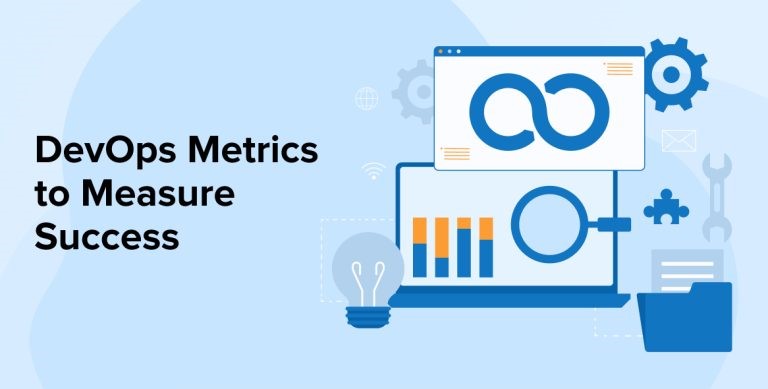4 Key DevOps Metrics to Know

Strong 8k brings an ultra-HD IPTV experience to your living room and your pocket.
Introduction
Organizations in the fast digital world of today work to provide software quickly, dependably, and efficiently. DevOps is a major strategy bridging the divide between development and operations. It helps accelerate and regulate software delivery. DevOps Metrics are performance indicators that are used to measure the effectiveness of DevOps methods. Using these metrics, teams can track development, spot problems, and improve their processes. Moreover, DevOps Metrics helps teams to improve cooperation, lower mistakes, and speed delivery cycles. This ultimately results in enhanced product quality and higher customer satisfaction by using data-driven insights. Aspiring DevOps professionals can join the DevOps Courses in India to learn more about DevOps Metrics. This guide will walk you through the most important DevOps metrics and their uses. Read on for more information.
What Are DevOps Metrics?
DevOps metrics are the key performance indicators (KPIs) in a DevOps environment. These indicators evaluate the quality and effectiveness of IT operations and software development. Teams can use these measures to track development, spot roadblocks, and always improve procedures. Common DevOps Metrics are:
• Deployment Frequency (how often code is deployed)
• Lead Time for Changes (time from code commit to deployment)
• Mean Time to Recovery (MTTR) (how quickly the system recovers from failures)
• Change Failure Rate (percentage of deployments causing failures).
Automation coverage, test pass rate, and infrastructure uptime are other important measures.
Tracking these indicators helps companies to guarantee quicker releases, improved teamwork, enhanced dependability, and more client satisfaction. Data-driven decision making and alignment of development and operations with corporate objectives depend on DevOps metrics.
4 Most Important DevOps Metrics
The four most critical DevOps metrics that businesses should prioritize to assess and enhance their software delivery performance are mentioned below:
1. Deployment Frequency
This indicator tracks the frequency of fresh code deployment to production. A high deployment frequency represents a more developed DevOps process involving small, tested, and frequently pushed code changes. It shows a team's agility and capacity for rapid delivery of solutions or fresh features. Elite DevOps teams can release many times a day.
Why it matters: It encourages constant delivery and enables companies to quickly meet market demands and consumer preferences.
2. Lead Time for Changes
Lead time monitors the time between a developer's code commit and production deployment. Shorter lead times point to effective development, testing, and distribution processes.
Why it matters: It helps in locating delivery pipeline log jams and demonstrates the speed a team can convert an idea into a live product.
3. Change Failure Rate
This measure shows what percent of deployments yield a failure (bugs, crashes, rollbacks, etc.). A low change failure rate suggests excellent releases and effective testing techniques.
Why it matters: It reflects your system's stability and the reliability of your release process. Both these aspects are essential for consumer happiness.
4. Mean Time to Recovery (MTTR)
The average time for recovery from a system breakdown or service interruption is represented by MTTR. The shorter the MTTR, the faster teams can spot and respond to problems in the production process.
Why it matters: It directly affects business continuity as well as user experience. Quick recovery reduces the cost of downtime and builds consumer trust.
In short, evaluating DevOps performance relies on these four measures. Refer to the DevOps Certification Training to learn these four approaches. Tracking and improving these measures help businesses improve software quality, speed delivery, and guarantee strong system reliability.
Why Do We Need DevOps Metrics?
Companies can measure and improve software delivery systems through data-driven insights obtained from DevOps Metrics. This enables companies to understand their performance. Moreover, with DevOps Metrics, it is now easier to identify challenges and enhance decision-making for continuous improvement.
In a DevOps environment, operations and development work practically together to create software rapidly and effectively. Without suitable checks, it gets difficult to assess if the implemented modifications are actually resulting in progress. DevOps metrics, therefore, assist in monitoring the software release's quality and pace. Among the most often used DevOps Metrics are deployment frequency, lead time for changes, change failure rate, and mean time to recovery (MTTR).
Furthermore, DevOps metrics promote responsibility and transparency among groups. By aligning technical performance with corporate objectives, they help leaders to assess team effectiveness and give priority to tasks. Furthermore, these measures encourage problem-solving by detecting problems early, thereby lowering downtime and improving user satisfaction.
DevOps metrics are not only figures; rather, they are great tools that direct teams toward quicker delivery, higher quality, and more resilient systems. This ensures greater success of DevOps processes. One can check the AWS DevOps Course Duration and join a training program to learn how to use the different DevOps metrics to achieve business goals.
Conclusion
DevOps Metrics allows companies to monitor the effectiveness of software delivery. It focuses on four important measures. With DevOps Metrics, companies can now focus on continuous improvement, reduce their downtime, and achieve business goals faster. These measures offer insights for transparency, improved cooperation, and ensure high-quality releases. Building agile, effective, and resilient software systems mostly depends on monitoring DevOps metrics.
Note: IndiBlogHub features both user-submitted and editorial content. We do not verify third-party contributions. Read our Disclaimer and Privacy Policyfor details.




